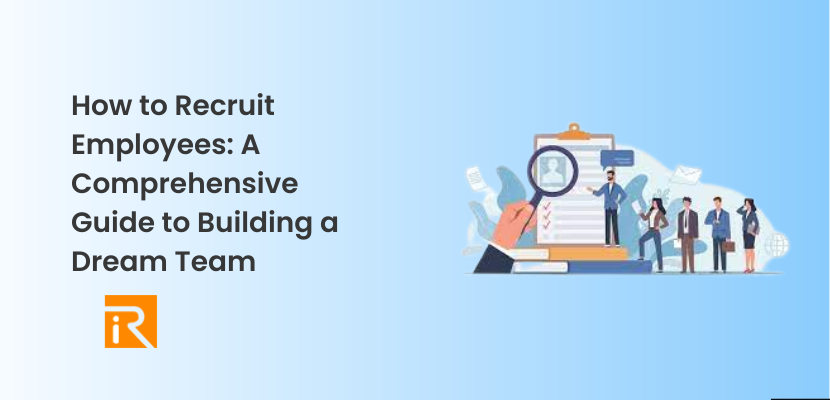Recruiting employees is a crucial aspect of any successful business. Building a team of skilled and motivated individuals can drive growth, innovation, and productivity. However, finding how to recruit employees, who fit your company culture and have the right skills can be challenging. In this article, we will explore effective strategies how to recruit employees. From crafting engaging job descriptions to conducting interviews that assess both technical abilities and cultural fit, we will guide you through the entire recruitment process.
How to Recruit Employees: A Step-by-Step Guide
How to Recruit Employees
Recruiting the right employees involves a systematic approach that focuses on attracting the most qualified candidates while ensuring they align with your company’s values and objectives. Here are some key steps to follow when recruiting employees:
-
Understand Your Hiring Needs
Assess your current team’s strengths and weaknesses and identify areas where additional skills are required. Project your future staffing needs based on your business goals and expansion plans while assessing how to recruit employees strategies.
-
Craft Compelling Job Descriptions:
Create job descriptions that not only outline the required qualifications and responsibilities but also showcase your company’s culture and growth opportunities. This step is the crucial part of how to recruit employees strategies.
-
Leverage Online Job Platforms:
Use relevant job boards and networking sites to reach a broader audience. Optimize your job posts with LSI keywords to improve visibility in search results.
-
Build an Attractive Company Culture:
Highlight your company’s values, employee benefits, and work environment to entice potential candidates.
-
Utilize Employee Referral Programs:
Encourage your current employees to refer qualified candidates. Implement a straightforward referral process and offer incentives for successful hires.
-
Engage with Professional Networks:
Attend industry events and conferences to connect with potential candidates. Leverage social media platforms to build professional relationships.
-
Screen Resumes Effectively:
Develop a checklist to screen resumes efficiently, prioritizing relevant experience and qualifications.
-
Conduct Pre-Interview Assessments:
Use skills tests and situational judgment exercises to assess candidates’ capabilities. Consider video interviews for remote candidates.
-
Conduct Engaging Interviews:
Ask behavior-based questions using the STAR method to get comprehensive responses.
-
Assess Cultural Fit:
Evaluate candidates’ alignment with your company values and team dynamics through group interviews and team-building activities.
-
Offer Competitive Compensation Packages:
Benchmark salaries and benefits with industry standards. Tailor packages to meet individual candidates’ needs.
-
Provide Growth and Development Opportunities:
Clearly outline career progression within your company and offer training and continuous learning initiatives.
-
Streamline the Hiring Process:
Optimize workflows to reduce time-to-hire. Utilize applicant tracking systems for better organization.
-
Extend the Job Offer:
Communicate offers professionally and enthusiastically. Be open to negotiations while staying within budget constraints.
-
Conduct Comprehensive Background Checks:
Verify employment history, references, and credentials to ensure accuracy and credibility.
-
Facilitate Smooth Onboarding:
Prepare a structured onboarding program and assign mentors to new hires for support.
-
Foster a Positive Candidate Experience:
Provide timely feedback and updates throughout the recruitment process. Request feedback from candidates to enhance your hiring practices.
-
Implement Employee Retention Strategies:
Cultivate a supportive work environment to reduce turnover. Recognize and reward employee achievements to boost morale.
-
Embrace Diversity and Inclusion:
Promote an inclusive workplace that values diversity. Consider blind hiring practices to minimize bias in the recruitment process.
-
Ensure Compliance with Labor Laws:
Stay updated on relevant employment laws and consult legal professionals when necessary.
Conclusion
Recruiting employees is a challenging yet rewarding process. By understanding your hiring needs, crafting compelling job descriptions, and leveraging online platforms, you can attract top talent to your company. Engaging interviews, cultural fit assessments, and competitive compensation packages will help you hire the right candidates. Embracing diversity and inclusion, ensuring compliance with labor laws, and providing a positive candidate experience are essential for building a strong and motivated team. Remember, continuous improvement in your recruitment process will lead to long-term success for your business.
FAQs
Q: How can I attract top talent to my company?
A: To attract top talent, focus on building an attractive company culture, offering competitive compensation packages, and providing growth opportunities. Engaging with professional networks and leveraging employee referral programs can also help you reach potential candidates.
Q: What are behavior-based questions in interviews?
A: Behavior-based questions assess candidates’ past experiences and behaviors in specific situations. They help predict future performance and are structured to follow the STAR method (Situation, Task, Action, Result).
Q: Why is cultural fit important in recruitment?
A: Cultural fit is crucial as it ensures that new hires align with your company’s values and work well within your team dynamics. Employees who fit your culture are more likely to be engaged, productive, and stay with the company longer.
Q: What is blind hiring, and how does it reduce bias?
A: Blind hiring involves removing personally identifiable information from candidate profiles during the initial stages of recruitment. This helps reduce unconscious bias based on factors like gender, ethnicity, or age, promoting diversity and inclusion.
Q: How can I streamline the hiring process?
A: To streamline the hiring process, utilize applicant tracking systems, establish clear workflows, and standardize interview procedures. This reduces delays and ensures a consistent candidate experience.
Q: What are some effective employee retention strategies?
A: Employee retention strategies include creating a supportive work environment, offering opportunities for growth and development, recognizing and rewarding achievements, and fostering a positive company culture.






















